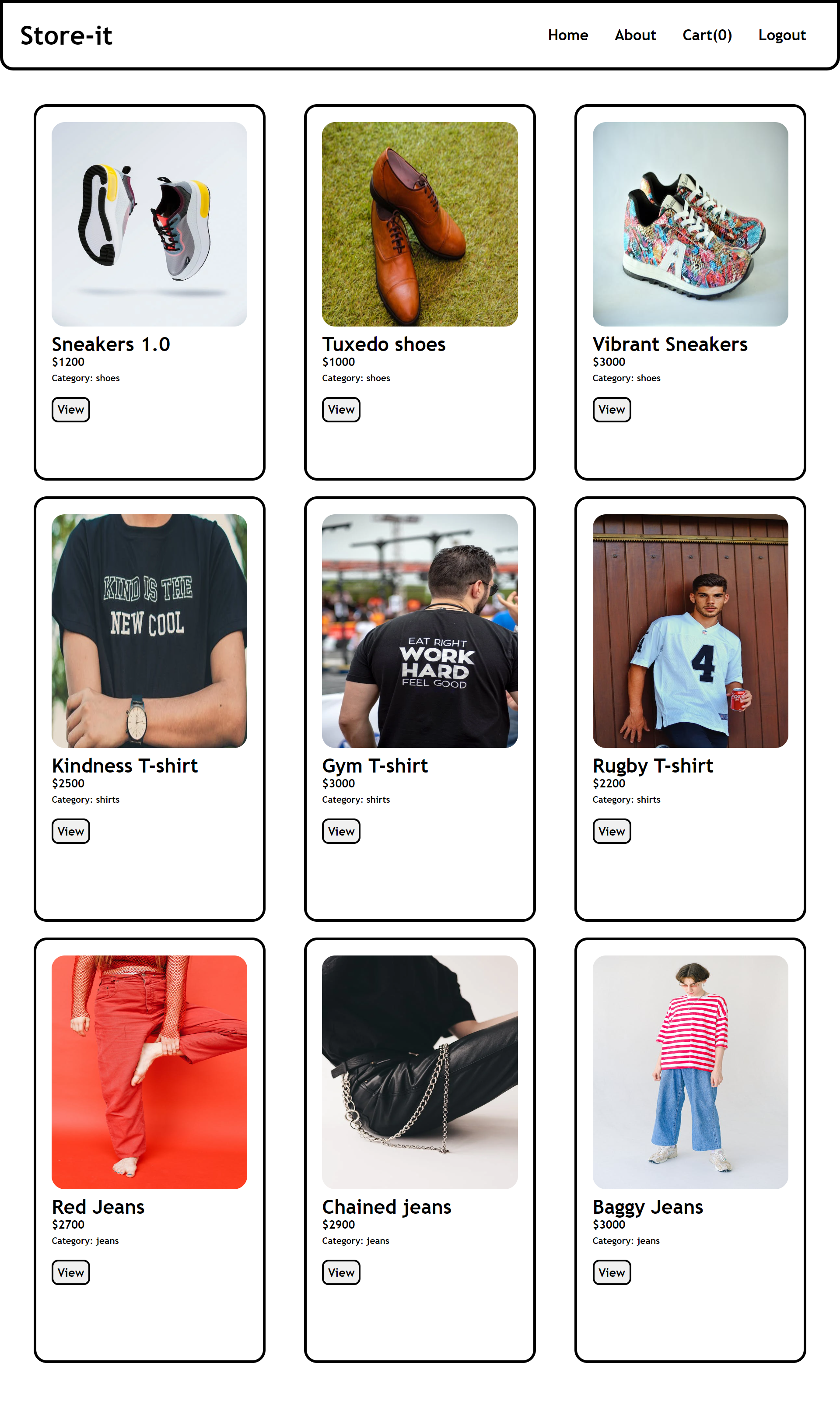Store-it happens to be an e-commerce website which has extensively utilized certain tools on both the client-side and the server-side, and those tools are:
i) Client-side: react-router,redux,axios,hooks,props,localStorage
ii) Server-side: mongoose,express,mongodb
This e-commerce website has all the necessary functionalities that we usually come across on various e-commerce websites, such as browsing products, adding it to your cart, checking out the items through a payment gateway, and so on and so forth. The data is basically being rendered from the backend using APIs created using express, and the data is fetched from the connected database in mongodb using mongoose. We're sending requests for fetching data from the backend by utilzing the axios library, which is solely being used in this project for rendering data, logging in and registering for when the user visits the website. Furthermore, we're using redux to manage state across the application to render the data on the user interface. We're also utlizing localStorage for maintaining the session after the user has logged in so that it doesn't refresh on page reload. The localStorage is being used in also the case of keeping the cart items visible for when a user adds a product to the cart.
I've extensively used commands to fetch documents from the database and also to connect the database in the first place
// For connecting with the database, the dbURL is the database collection link
mongoose.connect(dbURL)
.then()
.catch()
// For fetching documents all at once and send it to the client-side in the form of an array
let db=mongoose.connection.db;
db.collection("products").find().toArray((err,results)=>{
if(err) throw err;
res.send({allData:results})
})
// For finding a certain document from the database based on a query
signInModel.findOne({email:email},(err,user)=>{})
// {email:email} is the query for matching a certain document from the database
localStorage.setItem("<name-of-the-key",<value>) //to set the localStorage key-value pairs
localStorage.getItem("<name-of-the-key>") //to fetch a particular key value-pair that's already been set
localStorage.setItem("<name-of-the-key>",JSON.stringify()) //to set an array of objects
JSON.parse(localStorage.getItem("<name-of-the-key>")) //for getting an array of objects
axios.get("<URL of the backend API>") // for sending GET requests
axios.post("<URL of the backend API>", <data-to-be-sent>) //for sending POST requests
I've integrated the backend API provided by Stripe within the Stripe docs to get data of the products from the backend and process payment accordingly in a test mode.
// Setup Stripe variable
const stripe = require('stripe')(<Your secret key in the dashboard>);
// API for Stripe payment, in the POST format
app.post('/create-checkout-session', async (req, res) => {
const session = await stripe.checkout.sessions.create({
line_items: [
{
// Provide the exact Price ID (for example, pr_1234) of the product you want to sell
price: '{{PRICE_ID}}',
quantity: 1,
},
],
mode: 'payment',
success_url: `${YOUR_DOMAIN}/success.html`,
cancel_url: `${YOUR_DOMAIN}/cancel.html`,
});
res.redirect(303, session.url);
});
Front-end: Netlify
Back-end: Render

